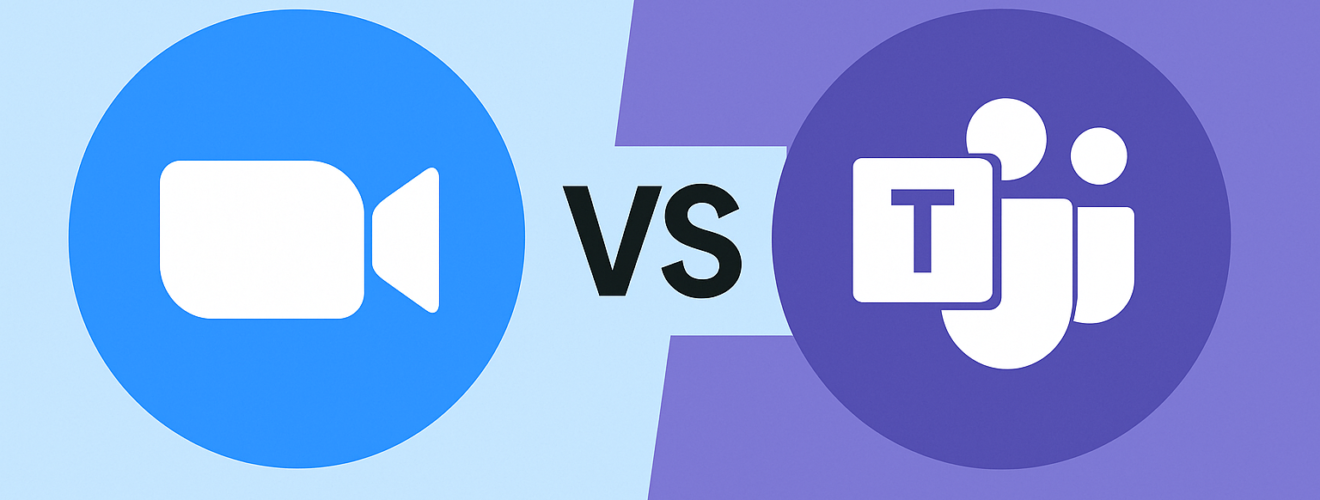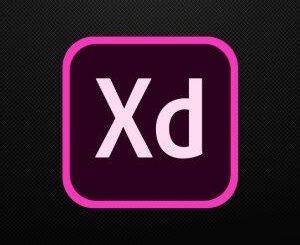Zoom vs Microsoft Teams: Which Wins in 2025?

The digital collaboration landscape in 2025 continues to thrive as remote work, hybrid offices, and global teams remain standard. Two platforms dominate this space: Zoom and Microsoft Teams. Both tools serve millions of users daily, but their strengths and applications differ. Businesses in 2025 face a crucial decision—should they prioritize Zoom for its simplicity and video performance, or should they embrace Microsoft Teams for its comprehensive collaboration ecosystem?
This analysis explores every aspect, from market share to AI capabilities, to determine which platform leads in 2025.
1. Market Share and User Base
In 2025, Zoom maintains a strong lead in the video‑conferencing market. The platform serves over 300 million daily users, primarily for meetings, webinars, and external communication. Zoom rose to prominence during the remote‑work boom and continues to attract organizations that rely heavily on virtual client interactions and online events.
Microsoft Teams follows closely with around 280 million daily users. Its adoption thrives in businesses already embedded in the Microsoft 365 ecosystem. Teams appeals to companies that want a single hub for messaging, file sharing, project management, and video meetings.
Elaboration:
Zoom thrives among companies that value external-facing interactions. Many schools, online event organizers, and client‑heavy businesses still prefer Zoom for its ease of access. Teams, in contrast, dominates internal communication. Enterprises integrate Teams with Outlook, SharePoint, and OneDrive, creating a central workspace for employees to collaborate without leaving the platform.
2. Pricing and Plans
Pricing often influences the choice between these platforms. Zoom offers a free plan that allows up to 100 participants but limits meetings to 40 minutes. Paid plans start around $15 per user per month, offering longer sessions, cloud storage, and enhanced admin controls.
Microsoft Teams provides a more generous free plan, supporting 100 participants for up to 60 minutes and offering 5 GB of cloud storage per user. Paid plans, typically bundled with Microsoft 365, range from $6 to $12.50 per user per month, including access to Word, Excel, PowerPoint, and 1 TB of OneDrive storage.
Elaboration:
Teams appeals to cost-conscious organizations because they receive more than just a meeting tool. Companies gain access to an entire suite of productivity apps. Zoom focuses on communication rather than full-suite collaboration, making it ideal for businesses that already have other productivity solutions but need high-quality video meetings.
3. Video Quality and Reliability
Video performance defines user experience. Zoom remains a leader in delivering smooth, low-latency video and audio. Even with limited bandwidth, Zoom maintains clarity and reduces lags. Large conferences, webinars, and training sessions run reliably on the platform.
Microsoft Teams now defaults to 1080p HD in paid plans and dynamically adjusts quality to match network conditions. While Teams offers crisp visuals, some users report minor delays during very large meetings compared to Zoom.
Elaboration:
When employees work from different geographic locations or rural areas with unstable internet, Zoom handles variations better. Organizations hosting frequent webinars and high‑stake virtual events often choose Zoom for its consistent performance. Teams performs best in structured internal meetings where bandwidth can be controlled and optimized.
4. Collaboration and Chat Features
Teams excels in collaboration. It integrates persistent channel chat, file sharing, task boards, and real‑time document editing. Teams transforms meetings into project workspaces where employees co‑author documents without switching between apps.
Zoom, while primarily a video platform, has added team chat, whiteboards, and live transcription. Yet, its collaboration tools remain secondary to its core meeting experience. Zoom often relies on third‑party integrations for advanced project management or document co‑authoring.
Elaboration:
A company that wants to centralize communication and workflow in one platform will find Teams more efficient. Employees can brainstorm in a meeting, assign tasks in Planner, and store documents in SharePoint—all without leaving Teams. Zoom cannot replicate this depth of collaboration natively, making it better suited for organizations that already rely on external tools like Slack or Asana.
5. AI and Smart Features
Artificial intelligence drives productivity in 2025. Zoom includes its AI Companion in all paid plans. It generates meeting summaries, automated follow‑ups, and searchable transcripts without additional fees.
Microsoft Teams also delivers advanced AI through Copilot Pro, but this feature requires a $30 per user per month add‑on. Copilot summarizes chats, creates meeting recaps, and integrates insights into Microsoft 365 applications.
Elaboration:
Zoom democratizes AI by including it in standard subscriptions, making it accessible for small and mid‑sized businesses. Teams offers deeper integration with Excel or Word through Copilot, but the extra cost restricts adoption for budget‑sensitive companies.
6. Security and Compliance
Security and compliance remain critical in 2025. Microsoft Teams leverages enterprise‑grade security, including AES‑256 encryption, multi-factor authentication, and compliance with GDPR, HIPAA, and SOC standards. Its deep integration with Microsoft’s secure cloud makes it a top choice for regulated industries like healthcare and government.
Zoom also offers AES‑256 encryption and end‑to‑end encryption options. While Zoom resolved past security concerns, some industries still prefer Teams for its built‑in compliance frameworks.
Elaboration:
A hospital, for example, can deploy Teams with confidence knowing that patient data remains protected under HIPAA compliance. Zoom remains secure but requires careful configuration to match strict compliance standards.
7. External vs. Internal Use
Zoom dominates external communication. Anyone can join a Zoom meeting via link, often without creating an account. Its user-friendly interface ensures clients, partners, and event attendees experience minimal friction.
Teams excels in internal collaboration. While it supports guest access, external participants face more steps, and browser limitations can restrict their experience.
Elaboration:
A marketing agency that frequently pitches to new clients will find Zoom more convenient. Meanwhile, a software company managing hundreds of internal projects benefits more from Teams because of its structured environment and integrated workflows.
8. Integrations and Ecosystem
Zoom integrates with over 3,000 third‑party applications, supporting CRMs, scheduling tools, and industry‑specific platforms.
Teams integrates with 2,500+ apps but shines with native Microsoft 365 tools like Outlook, SharePoint, OneDrive, and Power BI.
Elaboration:
Companies invested in Microsoft gain immense productivity by using Teams as a central hub. Zoom suits businesses that want flexible, cross‑platform integrations without committing to a single ecosystem.
Final Verdict: Which Wins in 2025?
Determining the winner depends entirely on use case:
- Zoom wins for external meetings, webinars, and organizations prioritizing intuitive video communication, AI productivity tools without extra fees, and reliable performance in all network conditions.
- Teams wins for companies that need a complete collaboration suite, want deep integration with Microsoft tools, require enterprise‑level security, and value cost efficiency in bundled subscriptions.
Many modern organizations adopt both platforms. Teams handles internal collaboration and document workflows, while Zoom serves external calls, training, and events. This hybrid approach maximizes flexibility while leveraging each platform’s strength.
Conclusion:
In 2025, no single platform universally dominates. Zoom leads in external communication and simplicity. Teams dominates internal collaboration and enterprise integration. The smartest organizations evaluate where their meetings happen most and how employees collaborate—then select the platform that aligns with those priorities.













